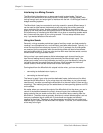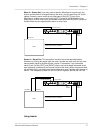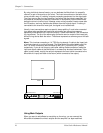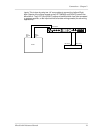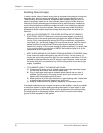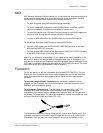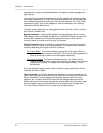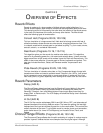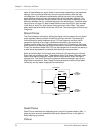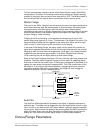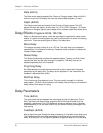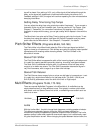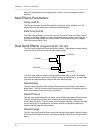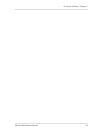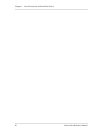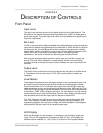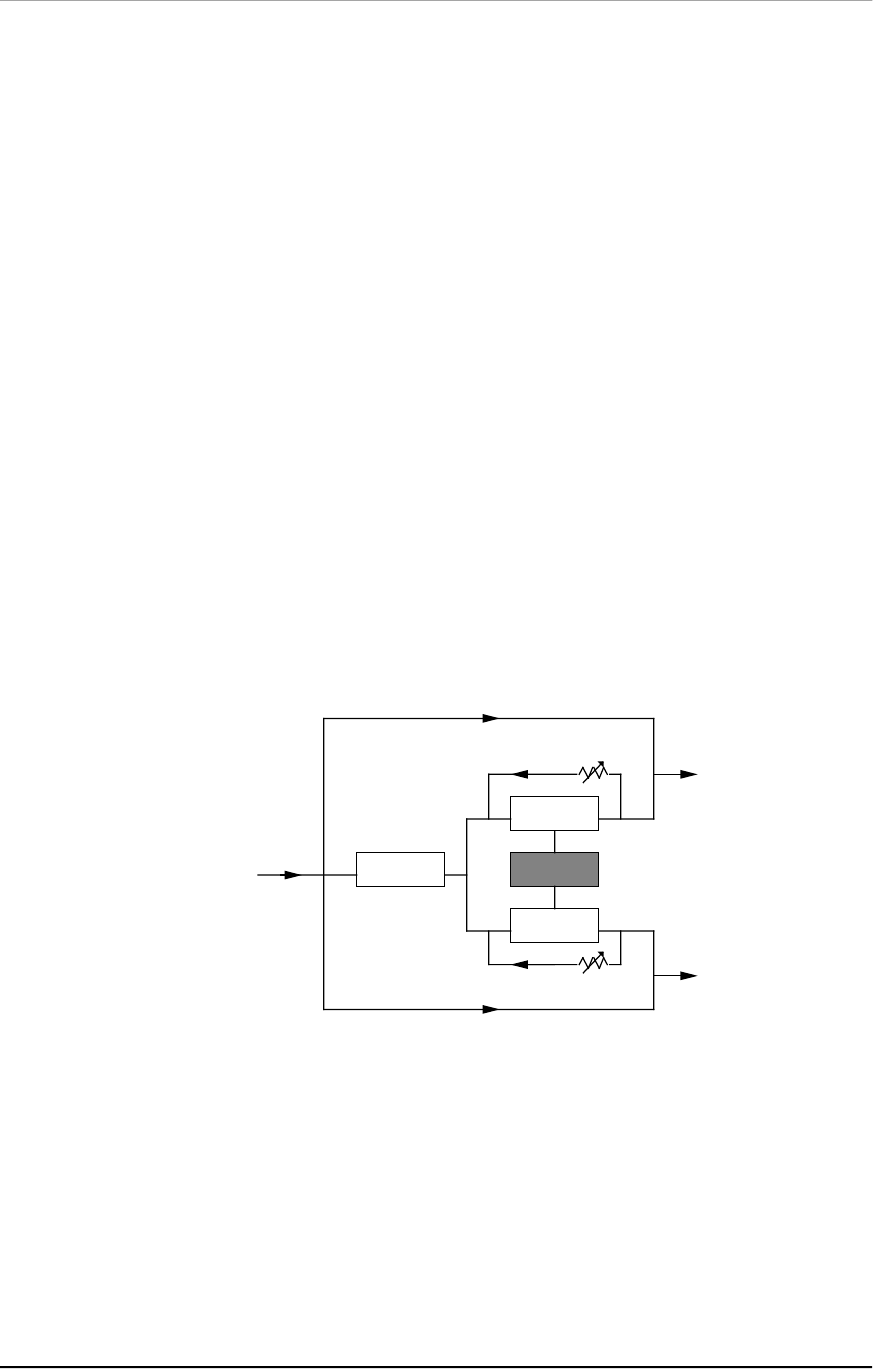
Chapter 3 – Overview of Effects
24 MicroVerb 4 Reference Manual
some of these effects can sound similar to one another depending on the parameter
settings, each is achieved differently and can be quite dramatic under the right
circumstances. Pitch effects are achieved by splitting the signal into at least two
parts, effecting the pitch of one of the parts, then mixing them back together. This
eventual mixing is essential since the overall sound of the effect is achieved by the
difference between the dry, uneffected signal and the effects signal. Therefore, when
using Chorus or Flange, it’s best to keep the Mix control around 50%. Also included
in this bank is Auto Pan, which pans a mono signal from Left to Right. This type of
effect works best with the Mix control set 100% wet. The various types of Chorus and
Flange are:
Stereo Chorus
The Chorus effect is achieved by splitting the signal into three parts with a dry signal
and a separate Detuning section for both left and right channels. The detuning is
further effected by being modulated by an LFO (low frequency oscillator) which
causes the detuning to vary. Many variables are available in this scheme: the
Predelay can be varied, the LFO depth can be varied, the LFO speed can be varied,
and a portion of the detuned signal can be fed back to the input to increase the effect.
Finally, the waveform shape of the LFO can be changed from a smooth sine wave, to
a more abrupt squarewave to make the pitch detuning more pronounced.
Some of the MicroVerb 4’s Choruses have individual LFOs controlling the Left and
Right sides, set at different rates. These effects, called True Stereo Choruses, often
have a wider stereo image than regular Stereo Chorus effects. When the Rate is
changed on a True Stereo Chorus, the frequency difference between the Left and
Right sides is maintained.
Note:
These Choruses process the Left and Right sides
individually, so any stereo imaging will be maintained.
LFO
DETUNE
DELAY
DRY
S
IGNAL
RIGHT
CHORUSE
D
OUTPUT
FEEDBACK
DETUNE
FEEDBACK
DRY SIGNAL
DRY SIGNAL
LEFT
CHORUSE
D
OUTPUT
Quad Chorus
Quad Chorus modulates four delayed signals, each with its phase offset by 90∞ . It
gives you twice as much modulation effect as the Stereo Chorus, so it’s great for
really fattening up a sound.
Chorus



